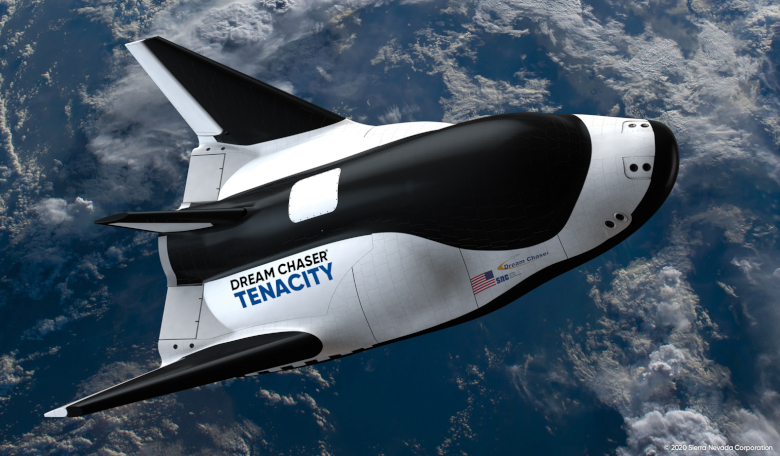Sierra Nevada Corp’s Dream Chaser spaceplane, a cargo spacecraft whose design is reminiscent of NASA’s space shuttle Orbiter vehicle, is to begin launching and landing in Florida in 2022, the company announced Tuesday.
The deal, which will see Dream Chaser service the International Space Station (ISS) under NASA’s Commercial Resupply Services-2 (CRS-2) contract, will launch aboard a United Launch Alliance rocket from Kennedy Space Center.
Once its payload is delivered, the uncrewed, robotic spaceplane will return to the space center's former space shuttle landing strip.
“This is a monumental step for both Dream Chaser and the future of space travel,” said SNC CEO Fatih Ozmen. “To have a commercial vehicle return from the International Space Station to a runway landing for the first time since NASA’s space shuttle program ended a decade ago will be a historic achievement."
The Use Agreement for Space Florida’s Launch and Landing Facility (LLF) makes SNC the first commercial user of Space Florida’s FAA Re-entry Site Operator License.
It also takes SNC one step further in applying for its own FAA re-entry license, something needed ahead of the first Dream Chaser mission next year, the company said.
“The Dream Chaser spaceplane is hands-down the best way home,” said Janet Kavandi, executive vice president of SNC’s Space Systems business area. “A runway landing is the optimum solution for both humans and science.”
Speaking at a press conference Tuesday on the landing strip, Kavandi, a former astronaut, said that the first Dream Chaser is being prepared for delivery to the space center next spring.
“When we first launch next year, 2022, at the end of that mission, we plan to come back and land here at this very runway," she said.
Designed to operate like humanity's first reusable spacecraft, NASA’s space shuttle, which flew 135 missions over a 30 year period, Dream Chaser is just over nine metres (30 feet) long, compared with the 37.1 metre (122 foot) long Orbiter.
SNC’s spaceplane has the potential to land at any FAA licensed landing site that has a suitable three kilometre (10,000 foot) runway capable of handling a typical commercial jet and its runway landing style also provides waiting recipients immediate access to ISS payloads upon landing.
Given the LLF’s close proximity to the Kennedy Space Center, Space Florida is ideally placed for SNC’s first orbital vehicle in its Dream Chaser fleet, the Dream Chaser Tenacity™ spaceplane, to make its debut landing, the aerospace firm said.
In further developments, Kavandi said Sierra Nevada officials were planning to tour the space center and adjacent Cape Canaveral Space Force Station this week to search for a suitable building to process Dream Chaser between launches.
"We'll look first at existing facilities on government property, but we may also consider building something ourselves if needed," she said.
Owned by Chairwoman and President Eren Ozmen and CEO Fatih Ozmen, SNC also plans to hire dozens of people in the region for processing and other possible engineering functions, Kavandi said.
SNC recently announced its Space Systems Group will transition to an independent commercial space company, Sierra Space that will build and deliver space transportation and infrastructure for LEO commercialisation.
Sierra Space also plans on building its own space station built around its inflatable LIFE™ habitat module, which could be complete by 2025, if not earlier.











